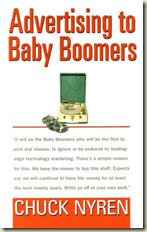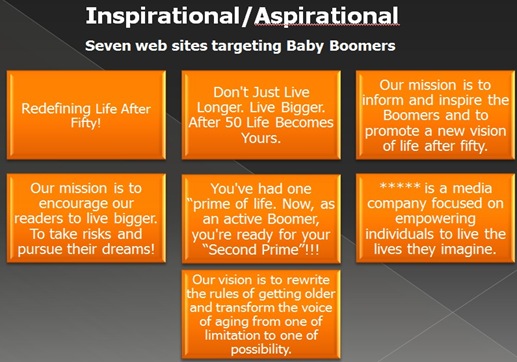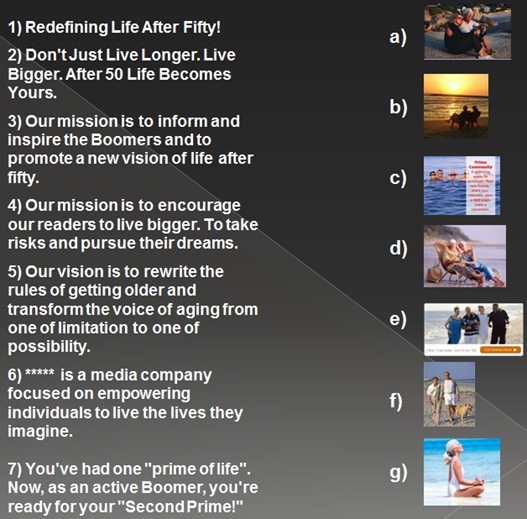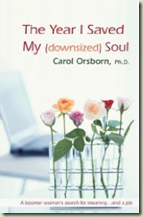 Okay, I admit it. I watched Mad Men last night. On On Demand. A guilty pleasure, although this particular episode was a bit slow and soapy.
Okay, I admit it. I watched Mad Men last night. On On Demand. A guilty pleasure, although this particular episode was a bit slow and soapy.
And like a good Mad Man, I didn’t fast-forward through the commercials. Two gave me the heebie-jeebies.
Backstory on the first one: There have been scores of news articles and studies recently about entrepreneurs, small business, and Baby Boomers:
Boomers go venturing
By Hanah Cho
• Over the past decade, Americans between 55- and 64-years-old had the highest rate of entrepreneurial activity.• The lowest rate belongs to the 20-34 age group.
• From 1996 to 2007, the 55-64 group averaged an entrepreneurial activity rate roughly one-third larger than their youngest counterparts.
Entrepreneurship: The New Mid-Life Crisis
So what does this mean for the U.S. economy? Should we expect a decline in productivity if those at the helm of the workforce aren’t as spry as they once were? Not at all, says Dane Stangler, the researcher who put together the study. He says the popular myth of boomers being a burden on the U.S. economy is completely unfounded.
And I’ve been talking about these subjects for years. Peek at the introduction to my book:
Venture capitalists take heed: the largest demographic of entrepreneurs is over forty, the largest consumer demographic the same.
I’m not sure American Express knows any of this. Here’s the first spot I saw – and other than a late fortyish Boomer in the beginning and end, small business looks like a young person’s game:
Even a promotional video for their Open Forum site barely gives a nod to Boomers (except for Richard Branson, whose image zips by without comment):
The second spot was for Expedia.com. I can’t find it on the web. There were two Baby Boomers in it. I think. Like Richard Branson, they flew by so fast it seemed as if Expedia was embarrassed about showing them at all.
If you have access to On Demand or something like it, and Mad Men is listed, you can probably catch the Expedia.com spot - and the two Baby Boomers sitting at a table.
Don’t blink or you’ll miss them.













